 |


|
|
The Homosexual in America The Homosexual in America: A Subjective Approach by Donald Webster Cory (Edward Sagarin); Greenberg; 1951.
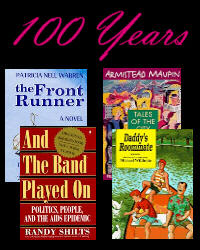 When Jack Nichols first read The Homosexual in America, he was 15-years-old, the year was 1953, and it was not the best time to be a homosexual in America.
When Jack Nichols first read The Homosexual in America, he was 15-years-old, the year was 1953, and it was not the best time to be a homosexual in America.
"The Homosexual in America," Nichols recalls, "had an immediate influence on me in three different ways. "First, it helped me, as one of its chapter titles suggests, to move "From Handicap to Strength". "Second, it suggested that the worst effects of discrimination against any minority are that its members take to doubting themselves and sharing in a general contempt for others of their kind. ... "Third, it made clear to me that our numbers are legion, and that there was much work to be done to change our status." "I remember reading through [The Homosexual in America] at a bookstore in San Francisco when I was 18," notes Perry Brass. "Cory actually talked about gay men like they were human, had human interests, human talents, and human feelings." Brass, who like Nichols went on to become a famed author and activist, thought "the book was staggering. It was the first book of its sort not to deal with homosexuality from a clinical, pitying, or revolted point of view, the point of view usually held by 'enlightened' psychiatrists or clergymen from that period who deigned to deal with the 'subject' of 'inversion.'" Nichols and Brass were not alone. "For the thousands of gay readers who discovered it at stores across the country, it was a revelation," wrote Charles Kaiser in The Gay Metropolis. The Homosexual in America "provided the most comprehensive description of gay life in America ever written." If nobody reads it today, it's because its once radical ideas have become conventional wisdom among gay and gay-friendly circles. For its enduring impact on three generations of gay men, lesbians and our friends, Donald Webster Cory's The Homosexual in America is the Book Nook's Book of the Century.
The Homosexual in America was published by Greenberg in 1951 and went through six printings by 1956, an indication of the book's popularity. Cory described The Homosexual in America as "a spiritual autobiography": ""This book is the result of a quarter of a century of participation in American life as a homosexual. ... It is my belief that the observations and viewpoints of the homosexual are as essential as those of the psychiatrist, the jurist, or the churchman in arriving at any conclusions on homosexuality." Most previous books about homosexuals were written by non-gay "authorities". Here at the outset Cory proposed the idea, radical for its time, that the best "authorities" on the topic of homosexuality are homosexual people. Equally radical was Cory's view that homosexuals are a minority group, albeit a unique one: "[H]omosexuals are a minority group, consisting of large numbers of people who belong, participate, and are constantly aware of something that binds them to others and separates them from the larger stream of life; yet a group without a spokesman, without a leader, without a publication, without an organization, without a philosophy of life, without an accepted justification for its own existence." Though most homosexuals remain in the closet, wrote the closeted Cory, to avoid "the social punishment of acknowledgment", the closet also deters members of this "unrecognized minority" from speaking out: "Until the world is able to accept us on an equal basis as human beings entitled to the full rights of life, we are unlikely to have any great numbers willing to become martyrs by carrying the burden of the cross. "But until we are willing to speak out openly and frankly in defense of our activities, and to identify ourselves with the millions pursuing these activities, we are unlikely to find the attitudes of the world undergoing any significant change." Not satisfied with fathering the homophile movement, Cory also pioneered the field of gay studies. The Homosexual in America was one of the first books to use and popularize the word "gay" to mean homosexual: "Gay is simple and easy to say and free from the usual stigmas. Its usage has thus grown with great rapidity. A few homosexuals object to it, but for lack of a better term they, too, employ it. ... The word serves as a signal, a sign of recognition. "In a conversation there is an exploration, a search to know whether the other is likewise hiding behind a mask. And then one person uses the word and awaits a response. The cue cannot be misunderstood." The Homosexual in America also "revealed" aspects of the gay demi monde, from bars to neighborhoods, that were heretofore unknown to most straight (or gay) readers. Chapter 16, "On a Five-Foot Bookshelf", is one of the earliest in-depth discussions of gay literature in print. Cory ends his book with his version of the gay agenda: "What does the homosexual want? ... The homosexual, first and foremost, wants recognition of the fact that he is doing no one any harm. He wants to live and let live, to punish and be punished when there are transgressions, and to go about the ordinary and everyday pursuits of life, unhindered either by law or by an unwritten hostility which is even more effectual than the written law. ... This is a far-reaching program, requiring the modification of attitudes over a period of generations, and it is only natural that it must fall upon those most concerned with this problem - the inverts - to take the initiative in remolding public opinion." In short, "[what the homosexual wants is freedom - not only freedom of expression, but also sexual freedom." That this is controversial even today speaks for Cory's political prescience.
"In doing oral history of past generations of lesbians and gay men, I was astonished at the diversity of individuals who spoke about the importance of" The Homosexual in America, says James Sears, author of Lonely Hunters, who ends this piece with a bittersweet note:
"Sadly, the pseudonymous Donald Webster Cory (Edward Sagarin), chose to divorce himself from the homophile movement during the next decade as it transformed into gay power, challenging the psychiatric profession and demanding rights. "Unfortunately, The Homosexual in America, written at a time of loyalty oaths and routine police harassment, has generally been lost in the dustbin of history. Its power, though, remains for anyone choosing to brush the dust from its jacket." The Top 100 Lesbian and Gay Books that Changed Our Lives This is the time of the year when critics display our expertise (or lack thereof) by publishing "best of" lists. Having done this for a while with my "Books of the Year" I decided to go one step further this year by proposing this list of the Top 100 Gay Books of the 20th Century. They are not ranked by literary merit--I leave that to the Publishing Triangle - but by their importance and influence on the lives of gay, lesbian, bisexual and transgender people, especially in the United States.
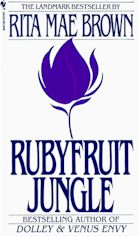 1. The Homosexual in America: A Subjective Approach, by Donald Webster
Cory, 1951
1. The Homosexual in America: A Subjective Approach, by Donald Webster
Cory, 1951
2. Sexual Behavior in the Human Male and Sexual Behavior in the Human Female, by Alfred T. Kinsey, et al., 2 volumes, 1948-55. 3. The Well of Loneliness, by Radclyffe Hall, 1928. 4. Corydon, by Andre Gide, 1924. 5. The Front Runner, by Patricia Nell Warren, 1974. 6. Society and the Healthy Homosexual, by George Weinberg, 1972. 7. Rubyfruit Jungle, by Rita Mae Brown, 1973. 8. Homosexuality and the Western Christian Tradition, by Derrick Shewin Bailey, 1955. 9. The City and the Pillar, by Gore Vidal, 1948. 10. And the Band Played On: Politics, People & the AIDS Epidemic, by Randy Shilts, 1987 11. "Howl" and Other Poems, by Allen Ginsberg, 1956. 12. Lesbian/Woman, by Del Martin and Phyllis Lyon, 1972 13. Christianity, Social Tolerance, and Homosexuality, by John Boswell, 1980. 14. "Tales of the City" Series, by Armistead Maupin, 6 volumes, 1978-89. 15. Song of the Loon, by Richard Amory, 1966. 16. A Single Man, by Christopher Isherwood, 1964. 17. Borrowed Time: An AIDS Memoir, by Paul Monette, 1988. 18. Faggots, by Larry Kramer, 1978. 19. Giovanni's Room, by James Baldwin, 1956. 20. Now that You Know, by Betty Fairchild and Nancy Hayward, 1979. 21. The Best Little Boy in the World, by John Reid [Andrew Tobias], 1973. 22. Sex Variant Women in Literature, by Jeannette Howard Foster, 1956. 23. The Immoralist, by Andre Gide, 1902. 24. Dancer from the Dance, by Andrew Holleran, 1978. 25. Zami: A New Spelling of My Name, by Audre Lorde, 1982. 26. Gay American History: Lesbians & Gay Men in the USA, by Jonathan Ned Katz, 1976 27. Remembrance of Things Past, by Marcel Proust, 7 volumes, 1913-27. 28. A Boy's Own Story and The Beautiful Room is Empty by Edmund White, 2 vol., 1982-88 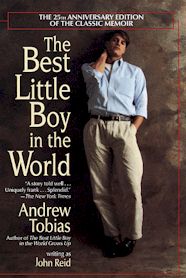
29. The Gay Mystique, by Peter Fisher, 1972. 30. A Place for Us [Patience and Sarah], by Isabel Miller, 1969. 31. Daddy's Roommate, by Michael Willhoite, 1990. 32. The Men with the Pink Triangle, by Heinz Heger, 1972. 33. Our Lady of the Flowers, by Jean Genet, 1943. 34. The Last of the Wine, by Mary Renault, 1956. 35. City of Night, by John Rechy, 1963. 36. The Lord Won't Mind, by Gordon Merrick, 1971. 37. I Have More Fun With You Than Anybody, by Lige Clarke and Jack Nichols, 1972. 38. Death in Venice, by Thomas Mann, 1913. 39. Myra Breckinridge, by Gore Vidal, 1968. 40. Our Right to Love: A Lesbian Resource Book, edited by Ginny Vida, 1978. 41. The Celluloid Closet: Homosexuality in the Movies, by Vito Russo, 1981. 42. Patterns of Sexual Behavior, by Clellan S. Ford and Frank Beach, 1951. 43. "Beebo Brinker" Series, by Ann Bannon, 5 vol., 1959-62 44. Consenting Adult, by Laura Z. Hobson, 1975. 45. This Bridge Called My Back, edited by Cherie Moraga and Gloria Anzaldua, 1981. 46. The Leatherman's Handbook, by Larry Townsend, 1972. 47. Heather Has Two Mommies, by Leslea Newman, 1991. 48. Out of the Closets: Voices of Gay Liberation, edited by Karla Jay & Allen Young, 1972. 49. The Price of Salt, by Claire Morgan [Patricia Highsmith], 1952. 50. Conduct Unbecoming: Gays and Lesbians in the U.S. Military by Randy Shilts, 1993. 51. Desert of the Heart, by Jane Rule, 1964. 52. The Gay Militants, by Donn Teal, 1971. 53. Christopher and His Kind, by Christopher Isherwood, 1976. 54. Familiar Faces, Hidden Lives, by Howard Brown, 1976. 55. The Gay Crusaders, by Kay Tobin and Randy Wicker, 1972. 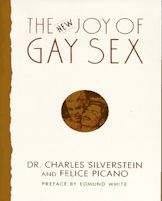
56. Bi Any Other Name, edited by Loraine Hutchins and Lani Kaahumanu, 1991. 57. Naked Lunch, by William S. Burroughs, 1959. 58. Better Angel, by Richard Meeker, 1933. 59. Loving Her, by Ann Allen Shockley, 1974. 60. The Joy of Gay Sex, by Charles Silverstein and Edmund White, 1977. 61. Coming to Power: Writings & Graphics on Lesbian S/M, by Samois, 1981. 62. The Color Purple, by Alice Walker, 1982. 63. Mister Benson, by John Preston, 1983. 64. Reports from the Holocaust: The Story of an AIDS Activist, by Larry Kramer, 1989. 65. The Church and the Homosexual by John J. McNeill, 1976. 66. Homosexual Oppression and Liberation, by Dennis Altman, 1971. 67. Maurice, by E. M. Forster, published 1971. 68. Nightwood, by Djuna Barnes, 1937. 69. Imre: A Memorandum and The Intersexes, by Xavier Mayne, 2 volumes, 1908. 70. Homosexual Behavior Among Males, by Wainwright Churchill, 1967. 71. With Downcast Gays, by Andrew Hodges & David Hutter, 1974 72. Lesbian Nuns: Breaking Silence, edited by Rosemary Curb & Nancy Manahan, 1985. 73. Becoming a Man: Half a Life Story, by Paul Monette, 1992. 74. The Young and Evil, by Charles Henri Ford and Parker Tyler, 1933. 75. Coming Out Under Fire: Gay Men & Women in World War Two by Allan Berube, 1990. 76. Now the Volcano: Latin American Gay Literature, edited by Winston Leyland, 1979. 77. Autobiography of an Androgyne and The Female-Impersonators by Earl Lind, 2 vol, 1918 78. Portrait of a Marriage by Nigel Nicolson, 1973. 79. The Scorpion, by Anna Elisabet Weirauch, 3 volumes, 1919-21. 80. Another Mother Tongue: Gay Words, Gay Worlds, by Judy Grahn, 1984. 81. The Rights of Gay People: An ACLU Handbook by E. Carrington Boggan, et al., 1975 82. Surpassing the Love of Men, by Lillian Faderman, 1981. 83. People in Trouble, by Sarah Schulman, 1990. 84. Loving Someone Gay, by Don Clark, 1977. 85. The Sexual Outlaw, by John Rechy, 1977. 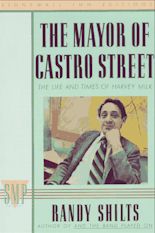
86. The Cancer Journals, by Audre Lorde, 1980. 87. The Lesbian In Literature, by Gene Damon/Barbara Grier, et al., 3 editions, 1967-81. 88. The Mayor of Castro Street: Life and Times of Harvey Milk, by Randy Shilts, 1982. 89. Stranger in the Land, by Ward Thomas, 1949. 90. Sisterhood is Powerful: Writings from Women's Liberation, ed. by Robin Morgan, 1970 91. Sappho Was a Right-On Woman, by Sidney Abbott and Barbara Love, 1972. 92 Gay Spirit: Myth and Meaning, edited by Mark Thompson, 1987. 93. Bob Damron's Address Book, by Bob Damron et al., annual editions, 1964f. 94. Nice Jewish Girls: A Lesbian Anthology, edited by Evelyn Torton Beck, 1982. 95. Queer in America, by Michelangelo Signorile, 1993 96. Quatrefoil, by James Barr, 1950. 97. The Naked Civil Servant, by Quentin Crisp, 1968. 98. The Homosexual Handbook, by Angelo d'Arcangelo, 1968. 99. Bertram Cope's Year by Henry Blake Fuller, 1919. 100. Olivia, by Olivia [Dorothy Bussy], 1949. |
 © 1997-99 BEI
© 1997-99 BEI
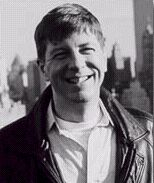 Charles Kaiser
Charles Kaiser 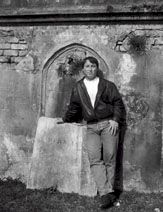 James T. Sears
James T. Sears